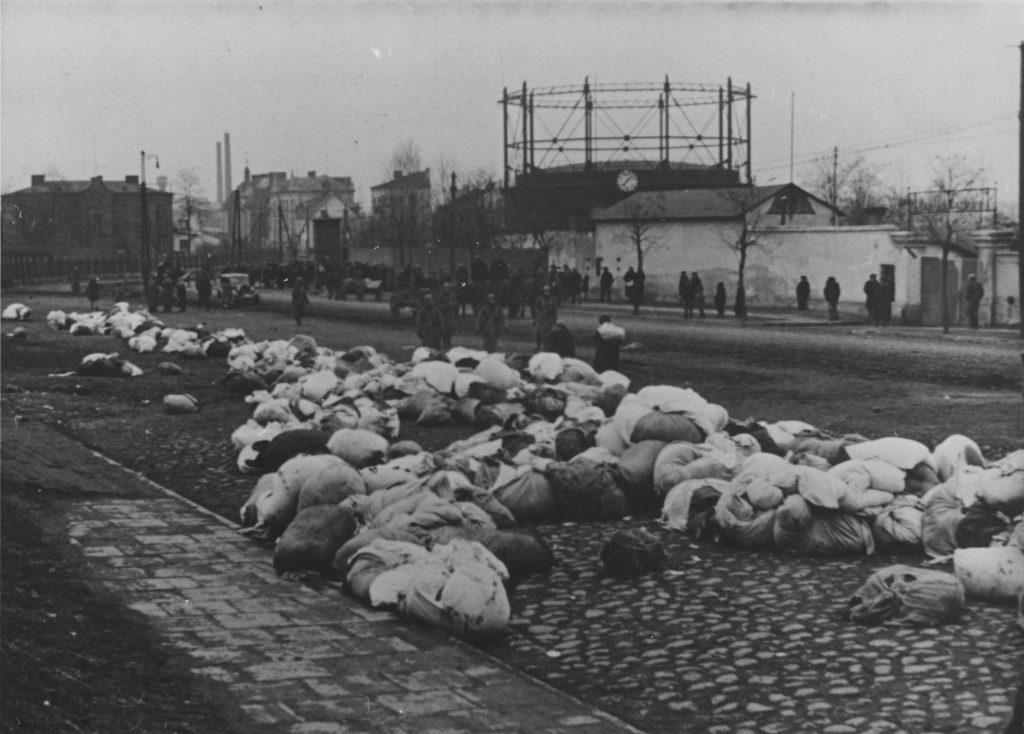English
Galicia as an cultural landscape in the east of Central Europe is divided between Poland and Ukraine today. Jews constituted an important part of the multi-ethnic society in the region since the Middle Ages. The towns of Drohobycz and Boryslaw were a center of the Galician oil mining belt and therefore important for the war effort of the German occupiers during World War II. The Jewish population was taken to forced labor, and was finally exterminated.
Our exhibition documents the Holocaust in these Galician towns. It follows the fate of Holocaust survivor Prof. Józef Lipman and his family. It pays tribute to the courage of rescuers, in particular to Berthold and Else Beitz.
This website supports the objectives of the multinational project „Remembering together – across borders“. However the content of the website is not the responsibility of any of the participating organizations – it is solely the responsibility of the team members running this website. The focus is the memory of the Holocaust in the Galician oil belt. The website is thus an accompanying supplement to the mobile exhibition „A History of Destruction and Survival“ published by the project in various languages.
Besides the blog with posts in different languages static information pages are offered for four different languages (English, German, Polish and Ukrainian).
Deutsch
Galizien ist eine Kulturlandschaft im Osten Mitteleuropas, die heute zwischen Polen und der Ukraine geteilt ist. Juden bildeten seit dem Mittelalter einen wichtigen Teil der multiethnischen Gesellschaft der Region. Die Orte Drohobycz und Boryslaw waren das Zentrum des galizischen Ölreviers und damit für die deutschen Besatzer im 2. Weltkrieg kriegswichtig. Die jüdische Bevölkerung wurde zur Zwangsarbeit herangezogen und schließlich vernichtet.
Unsere Ausstellung dokumentiert den Holocaust in diesen galizischen Städten. Sie folgt dem Schicksal der Familie des Holocaust-Überlebenden Prof. Dr. Józef Lipman. Sie würdigt den Mut der Retter, besonders den von Berthold und Else Beitz.
Diese Webseite unterstützt die Ziele des multinationalen Projekts „Gemeinsam erinnern – über Grenzen hinweg“. Die Inhalte der Webseite werden aber nicht verantwortet durch eine der beteiligten Organisationen, sondern durch die Mitarbeiter dieser Webseite. Schwerpunkt ist die Erinnerung an den Holocaust im galizischen Erdölrevier. Die Webseite ist damit eine begleitende Ergänzung zu der vom Projekt in verschiedenen Sprachen herausgegebenen mobilen Ausstellung „Eine Geschichte von Vernichtung und Überleben“.
Neben dem Blog mit Beiträgen in verschiedenen Sprachen werden statische Informationsseiten für vier verschiedene Sprachen angeboten (Englisch, Deutsch, Polnisch und Ukrainisch).
Polski
Galicja jest krainą na wschodzie w Europie Środkowej, której obszar podzielony jest obecnie między Polskę i Ukrainę. Żydzi stanowili od średniowiecza ważną część wieloetnicznego społeczeństwa tego regionu. Miejscowości Drohobycz i Borysław stanowiły centrum galicyjskiego okręgu naftowego i dlatego były strategicznie ważne dla niemieckiego okupanta w czasie II wojny światowej . Żydowska ludność została najpierw zaprzęgnięta do pracy przymusowej, a następnie zamordowana.
Nasza wystawa dokumentuje Holokaust w obu galicyjskich miastach. Śledzi losy rodziny profesora Józefa Lipmana, która ocalała z Zagłady i czci odwagę ratujących, szczególnie tą Bertholda i Else Beitzów.
Przedstawiamy Państwu stronę internetową, która wspiera realizację międzynarodowego projektu „ Przywracać pamięć – ponad granicami”. Za jej teksty nie odpowiada żadna z organizacji, lecz osoby tworzące tę stronę. Priorytetem jest przypominanie o Holokauście w Galicyjskim Okręgu Naftowym. Niniejsza strona stanowi uzupełnienie przenośnej, wielojęzycznej wystawy „ Historia o Zagładzie i przeżyciu”, która jest rezultatem projektu.
Obok blogu z komentarzami w różnych językach, zaproponujemy strony informacyjne w językach: angielskim, niemieckim, polskim i ukraińskim.
український
Галичина – культурний ландшафт на сході Центральної Європи, поділений сьогодні між Польщею та Україною. Починаючи з часів Середньовіччя, євреї становили важливу частку поліетнічного суспільства цього регіону. Міста Дрогобич та Борислав, які були центрами галицького нафтового басейну, мали стратегічне значення для німецьких окупантів під час Другої світової війни. Єврейське населення регіону було спочатку залучене до примусових робіт, а потім знищене.
Наша виставка присвячена Голокосту у Дрогобичі та Бориславі. Вона побудована довкола історії людини, яка пережила Голокост – професора Йозефа Ліпмана з Борислава та його родини. Метою цієї виставки є також вшанування мужності людей, які рятували євреїв під час Голокосту, зокрема Бертольда та Ельзе Байц.

Drohobycz: during deportation to Belzec death camp. Wiener Library, VIII B Poland. Album 50.1